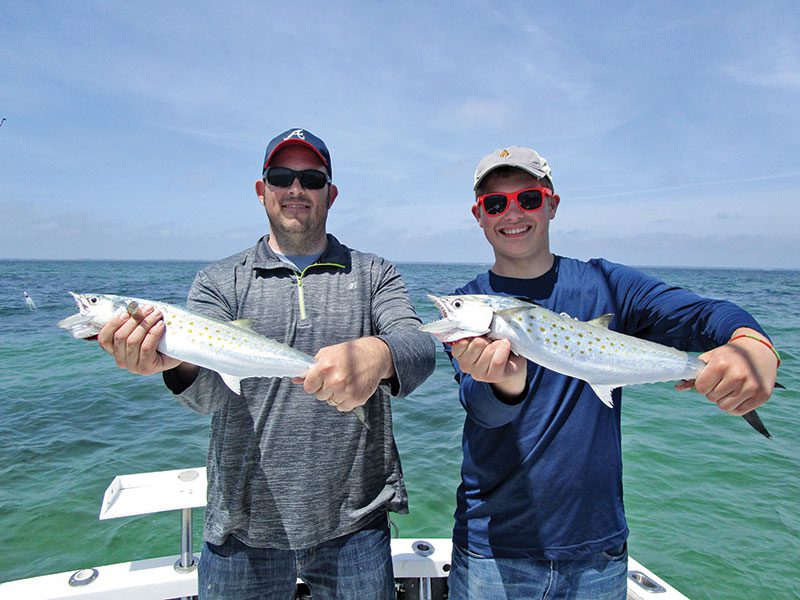
There are a lot of influences that effect fish and fishing: one of the greatest is the moon. I know anglers and guides who live by the moon phases. When it’s at full stage, there’s a feeling by some that fish have been feeding all night and are not as prone to bite in the day. I’m not convinced that’s true, since we have caught fish very well at the full moon, but every angler has their own way of seeing the world.
One incident I witnessed is on a dock in Key West one full moon night, where jack crevalle were feeding on small baits. The jacks started swimming upside down using the silhouette of the fish against the brightness of the moon. They had discovered over the millennium that this time can give them the upper fin to ambush prey that didn’t see them coming. Offshore, during some night fishing trips for mangrove snapper, we have watched kings exploding herring schools using the same method. Moon phases and distance from the earth make the tides. I know pompano fisherman who understand the exact time to fish Bob Sikes Cut by watching the tide and moon and can go out for an hour and limit out. I wish I had that knowledge, but those fisherman keep it close and don’t want to give away secrets.
Talking about pompano always get my juices flowing. March is a little early to be on them, but as the water warms, be looking for the first run. Already to the West, there have been spotty reports of fish being taken. The East Pass is our go-to spot and both sides can hold fish when they arrive. It may be early, but we are waiting with jig at the ready. While waiting for them you can be looking for the first of the Spanish mackerel to come in. These fish are usually on the small side but give a great fight and are excellent table fare when eaten right after catching them. Try broiling filets skin side down with butter, salt and pepper; the meat is light and tasty.
Sea trout are generally confused this time of year since the weather can warm and cool in the same week. Most have stayed in the estuary systems for the hard winter period, but venture out to the river mouths when the water temperatures come up to the mid 60’s. Redfish are still around the docks and on the beach at Dog Island so look for schools around mullet. There has been a strong sheepshead bite this year in and around those same areas. Fiddler crabs are the best bait, but a small piece of shrimp is fine if fished slowly.
The fronts, as always, keep us at the dock, but a day or two after it passes, the sea calms down and it gets real pretty. However, be careful when the north wind is blowing. It may look flat inshore, but offshore the wind can make the waves very dangerous.
Good luck out there and be safe.
CAPT. CHESTER REESE
Natural World Charters
(850) 228-9060
www.naturalworldcharters.com
